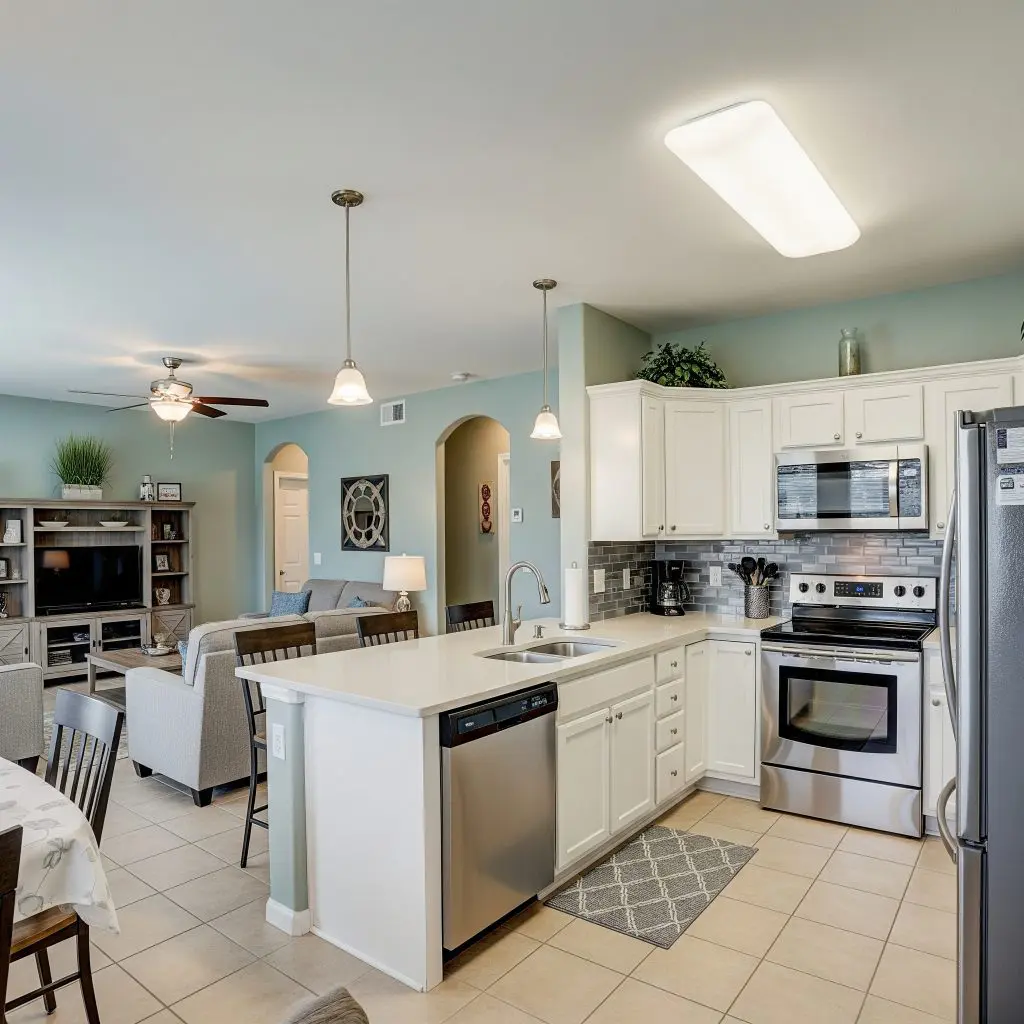Ohio Real Estate Market 2025: Unlocking Growth with DSCR Multi-Family Loans
- Current Market Conditions in Ohio (2025)
- What is a DSCR Loan?
- Benefits of DSCR Loans for Ohio Real Estate Investors
- Ohio DSCR Loan Property Types
- Current DSCR Loan Interest Rates & Terms (2025)
- DSCR Loan Application Process: Step-by-Step for Ohio Investors
- Cash Flow Analysis and DSCR Calculation Example
- Loan Qualification Requirements in Ohio (2025)
- Recommended Ohio DSCR Lenders & Market Insights
- Conclusion
The Ohio real estate landscape in 2025 stands at the crossroads of opportunity and growth, particularly for multi-family investment property owners. With robust population shifts, urban renewal projects, and affordable entry points in major cities like Columbus (43219, 43215), Cincinnati (45202, 45220), Cleveland (44113, 44109), and the emerging Akron (44308, 44320), Ohio is rapidly attracting a new wave of real estate investors.

Current Market Conditions in Ohio (2025)
Ohio’s multi-family sector is thriving, driven by steady rental demand in both urban and suburban neighborhoods. The 2-4 unit multi-family segment has seen an 11% year-over-year price increase and vacancy rates hovering near historic lows—averaging 4.2% in key zip codes, especially in downtown and near-campus neighborhoods such as Columbus’ Italian Village (43215) and Cincinnati’s Clifton (45220). State-wide, rents have trended up 7%, outpacing much of the Midwest on a percentage basis. As of January 2025, the median price for multi-family properties in the major metros sits between $230,000 and $450,000.
Need capital? GHC Funding offers flexible funding solutions to support your business growth or real estate projects. Discover fast, reliable financing options today!
Test Your Expertise: The Complexities of the 1031 Exchange

As a sophisticated real estate investor, you understand that the 1031 Exchange is a cornerstone strategy for tax deferral and wealth accumulation. But beyond the basics, the intricacies of the 1031 Exchange rules can pose significant challenges. This quiz is designed to test your in-depth knowledge and highlight critical nuances that separate casual investors from true experts in 1031 Exchange transactions.
Instructions: Choose the best answer for each question.
⚡ Key Flexible Funding Options
GHC Funding everages financing types that prioritize asset value and cash flow over lengthy financial history checks:
-
Bridge Loans: These are short-term loans used to "bridge the gap" between an immediate need for capital and securing permanent financing (like a traditional loan or sale). They are known for fast closing and are often asset-collateralized, making them ideal for time-sensitive real estate acquisitions or value-add projects.
-
DSCR Loans (Debt Service Coverage Ratio): Primarily for real estate investors, these loans are underwritten based on the property's rental income vs. debt obligation ($\text{DSCR} = \text{Net Operating Income} / \text{Total Debt Service}$), not the borrower's personal income or tax returns. This offers flexibility for those with complex finances.
-
SBA Loans: The Small Business Administration (SBA) guarantees loans offered by partner lenders. While providing excellent terms (long repayment, lower rates), the application process is typically slower than private/bridge funding, often making them less suitable for immediate needs. SBA eligibility heavily relies on the DSCR metric for repayment assessment.
🌐 Learn More
For details on GHC Funding's specific products and to start an application, please visit their homepage:
The Ultimate DSCR Loan for Rental Property Quiz

Are you looking to expand your real estate investment portfolio? A DSCR loan might be the perfect tool to help you achieve your goals without relying on traditional income documentation. Test your knowledge with this quiz to see if you're ready to master the intricacies of a DSCR loan for rental property.
What is a DSCR Loan?
Debt Service Coverage Ratio (DSCR) loans have emerged as a game-changer for investment-focused borrowers. Unlike conventional loans, DSCR financing is designed specifically for income-producing properties like duplexes and fourplexes. The loan qualification process pivots away from personal income documentation and instead centers on the property’s own ability to generate positive cash flow.
Benefits of DSCR Loans for Ohio Real Estate Investors
- No Personal Income Verification: The biggest advantage is the elimination of traditional W-2s, tax returns, and employment checks. Investors whose reported income doesn’t reflect their true earning power benefit immensely — including self-employed individuals, LLCs, and those reinvesting capital gains.
- Property-Based Qualification: Lenders look at how well the property covers its expenses through rental income, offering streamlined approvals for experienced and first-time investors alike.
- Portfolio Growth: DSCR loans are not capped by personal DTI (debt-to-income ratio), allowing aggressive expansion for those wanting to build a robust Ohio rental portfolio.
- Investor-Focused Flexibility: Suitable for properties in LLCs or corporations, avoiding personal risk and mixing personal with business finances.
Ohio DSCR Loan Property Types
For days 8-14 on the property type rotation, the focus is multi-family properties (2-4 units). These offer balanced risk and reward, ideal for cash flow stability and easier property management. Typical scenarios in central neighborhoods (like Over-the-Rhine in Cincinnati, ZIP 45202) include duplexes to four-unit apartment buildings, which maximize earning potential and minimize vacancy risk.
Target Locations & High-Growth Markets:
- Columbus (43219, 43215): Proximity to downtown offices and Ohio State University. Continued population growth and urban revitalization spur strong rental demand.
- Cincinnati (45202, 45220): Major redevelopment, fast gentrification, and booming tech sector growth draw both renters and investors.
- Cleveland (44113, 44109): Rejuvenated warehouse districts and hospitals create hot multi-family pockets.
- Akron (44308, 44320): Affordable entry points, strong cap rates, and less competition.
Current DSCR Loan Interest Rates & Terms (2025)
✅ Small Business Resources
-
SBA – Small Business Administration
https://www.sba.gov - SCORE Mentors (Free Mentoring & Workshops)
https://www.score.org - Small Business Development Centers (SBDC)
https://americassbdc.org
Are You an SBA Real Estate Loan Expert?

Test your in-depth knowledge on using SBA Loans for owner-occupied commercial Real Estate acquisition. These questions delve into the critical details that can impact your business's growth and financial strategy.
DSCR loans in Ohio generally offer the following terms for multi-family properties:
- Interest Rates: 7.25% – 8.50% (30-year fixed or 5/7-year ARM options), depending on the DSCR, property location, and investor profile
- Loan-to-Value (LTV): Up to 80% for qualified properties
- Amortization: 30 years, with interest-only options available for higher cash flow
- Prepayment Penalties: Standard 3-5 year declining (but waivable with some lenders)
DSCR Loan Application Process: Step-by-Step for Ohio Investors
- Identify Your Target Property: Find promising 2-4 unit properties in top zip codes (e.g., Columbus 43219, Cleveland 44109).
- Gather Property Cash Flow Data: Obtain leases, rent rolls, and expense statements for the property.
- Connect with Local DSCR Lenders: Consider Ohio specialists such as Lima One Capital, RCN Capital, and LendingOne.
- DSCR Calculation: Lender reviews gross rental income against projected expenses/principal and interest payments (see below).
- Loan Pre-Approval: Soft or hard credit pull, property appraisal, and DSCR ratio check.
- Underwriting & Due Diligence: Review of title, insurance, and final investor docs.
- Closing: Typical closings occur within 21-35 days, with funds disbursed to finalize the property acquisition.
Cash Flow Analysis and DSCR Calculation Example
✅ Real Estate Investor Resources
-
AirDNA (Short-Term Rental Data)
https://www.airdna.co - Rentometer (Rent Comps)
https://www.rentometer.com - Zillow Research & Data
https://www.zillow.com/research
DSCR Loan IQ Quiz!

Test your knowledge of Debt Service Coverage Ratio (DSCR) loans!
Sample Scenario: A duplex in Cincinnati (45220) rents for $2,400/month. Expenses (taxes, insurance, maintenance, management, utilities) total $700/month. Proposed principal and interest payment is $1,200/month.
- Net Operating Income (NOI): $2,400 – $700 = $1,700/month
- Annual NOI: $1,700 x 12 = $20,400
- Annual Debt Service: $1,200 x 12 = $14,400
- DSCR = $20,400 / $14,400 = 1.42
Most Ohio DSCR lenders require a minimum DSCR of 1.20–1.25, meaning this property qualifies comfortably. The higher your DSCR, the better your rate and terms.
Loan Qualification Requirements in Ohio (2025)
- Minimum DSCR: 1.20-1.25 (property must generate 20-25% more income than debt payments)
- Credit Score: 660+ usually required; some lenders go as low as 620 for strong deals
- Down Payment: 20-25% standard (depending on LTV and borrower profile)
- Experience: Not always required, but preferred on larger portfolios
- Entity Loans: Properties owned in LLC/corporation are eligible
Recommended Ohio DSCR Lenders & Market Insights
Lima One Capital: Widely active in Ohio, competitive rates for 2-4 unit buildings in urban cores.
RCN Capital & LendingOne: Prioritize fast closings, flexible documentation, and local expertise in Cleveland and Columbus.
Local market tip: Properties within 43215 (Columbus) and 45202 (Cincinnati) attract top rents and low vacancy, providing strong DSCR for easier loan qualification.
Conclusion
In 2025, Ohio’s multi-family market provides exceptional opportunities for investors. DSCR loans remove traditional hurdles by focusing on the property’s own income, offering financial freedom for both new and experienced buyers. With the right zip code, accurate cash flow analysis, and guidance from top lenders, you can secure high-performing assets in Ohio’s hottest investment corridors.
